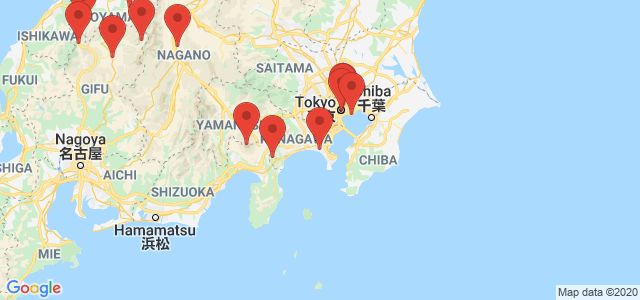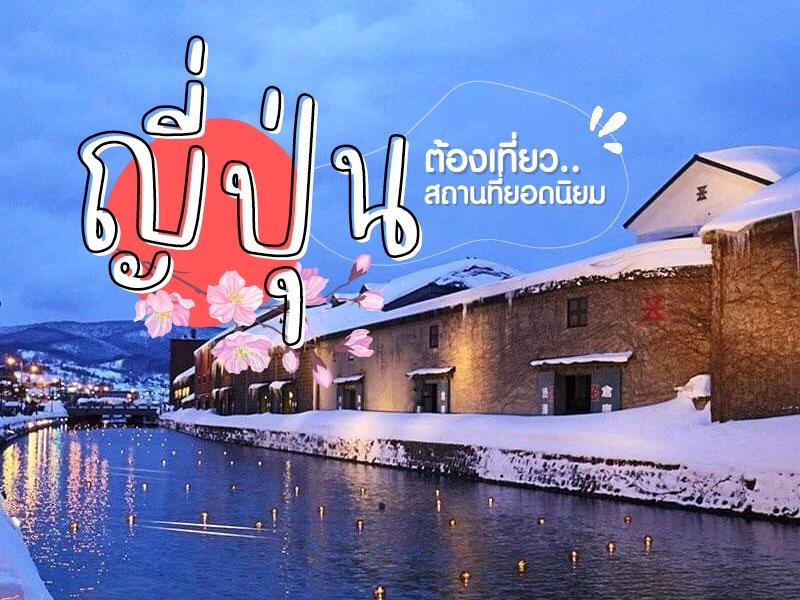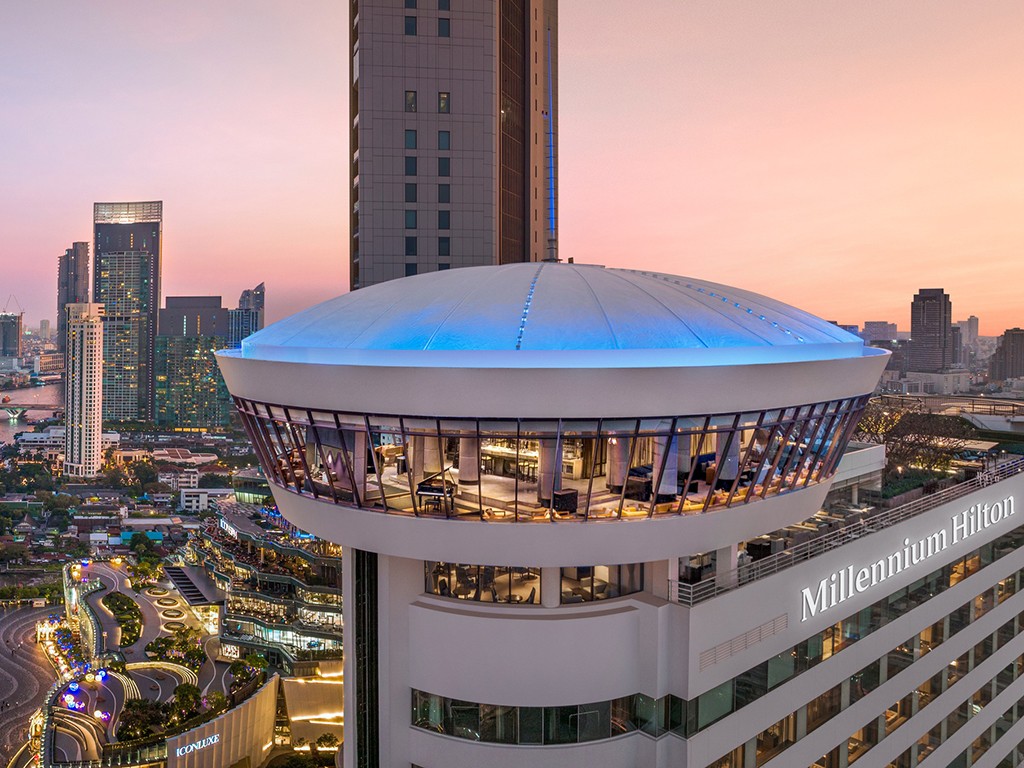
ญี่ปุ่น ต้องเที่ยว รวมสถานที่ท่องเทียว ยอดนิยมโดยค
 1764
1764
 40 จุดที่คนไทยชอบเที่ยว เมื่อไปประเทศญี่ปุ่น
40 จุดที่คนไทยชอบเที่ยว เมื่อไปประเทศญี่ปุ่นเกียวโต มากมายให้น่าค้นหา ไม่ไกลจากโอซาก้า ต่อด้วยปลีกซ้าย(เส้นทางเที่ยวตะวันตก) ไปถึงฮิโรชิมา รูทนี้น่าสนใจ หรืออาจขยันหน่อยเลยไปแถวคูมาโมโต้ แล้วต้องวิ่งกลับมาขึ้นเครื่องกลับโอซาก้า รูทนี้นิยมสุดๆ
รองมาติดๆ เส้นโตเกียว เที่ยวรอบๆ โตเกียว อาจไปนิโก้ เมืองมรดกโลก เที่ยวได้ทั้งวัน ไหว้พระไดบุสซึองค์ใหญ่(แต่ก็ไม่ใหญ่มาก) พักย่านอูเอโนะ คนไทยชอบช็อป (ใกล้ห้างเยอะ ตึกม่วง ตีกแดง ตึกขาว ช็อปสนั่นเมือง จำพวกยา สิ้นค้าอีเลคโทรนิค กล้องและอุปกรณ์ ของเล่นเด็ก ของเล่นผุ้ใหญ่ ฯลฯ) พอมีเวลาอาจวกขึ้นชิราคาวะ พักโทยามา ก็น่าเพลินดี วันนึง หรือสองวันเต็มๆ กับ Disneyland Tokyo ก็จัดไปก่อนกลับ
ฮอกไกโด หน้าหนาวจะดีกปลายๆ ธ.ค. ถึง ก.พ. อากาศดี(แบบหนาวๆ) ถ่ายรูปยามค่ำคืนแสงไฟ กับสีขาวโพลนของหิมะ ละลายนักท่องเทียวมานักต่อนักแล้ว มีช่วงเทศกาล Snow Festival ไฮไลท์น่ะครับของบอก แถวถนนโอโดริ ดูคิววันจัดน่าจะประมาณ ก.พ. เช็คกันอีกที พักแถวซัปโปโรแหละสะดวกสุด ใกล้แหล่งช็อป อ้อเผื่อเวลาช็อปใหญ่ 1 วันเต็มสำหรับคุณผู้หญิงด้วย...
Kotoku-in Temple is home to the Great Buddha of Kamakura (Kamakura Daibutsu), the second largest Buddha statue in Japan. The bronze statue stands at 11.4 meters tall, with a circumference of 29.4 meters and a face length of 2.3 meters. Weighing approximately 121 tons, it exudes a serene atmosphere through the positioning of its hands and eyes. Inside the statue, visitors can climb a staircase that...
read more
Toshogu Shrine, also known as the (東照宮, Tōshōgū), is an impressive commemorative site dedicated to Tokugawa Ieyasu, the renowned founder of the Tokugawa Shogunate that governed Japan for over 250 years until 1868. Within Toshogu, Ieyasu is revered as the deity Tosho Daigongen, symbolizing the "Great Deity of the East Shining Light." Originally a modest mausoleum, Toshogu underwent remarkable expan...
read more
Ainokura village, located deep within a valley, is the most secluded settlement in the Gokayama region of Japan. With nearly 20 gassho-zukuri farmhouses, it is also the largest village in the area. While many of these farmhouses are still occupied by residents, some have been converted into restaurants, museums, and minshuku accommodations.In 1995, Ainokura, alongside Suganuma and Ogimachi, was de...
read more
Shirakawa-go is a precious cultural treasure nestled in the mountainous heart of Gifu Prefecture. Set along the narrow Shogawa River basin and surrounded by forested peaks, this historical village features over 200–300-year-old farmhouses arranged in neat rows from north to south, as if time itself stood still.
The village is most renowned for its Gassho-zukuri architecture—named after... read more
The village is most renowned for its Gassho-zukuri architecture—named after... read more
Takayama's old town has been wonderfully preserved, showcasing many buildings and streets from the feudal times when the city was a thriving merchant hub. The southern part of the old town, especially Sannomachi Street, is particularly charming with its old houses, shops, cafes, and sake breweries that have been around for centuries. Some of the houses in the old town are open to the public, givin...
read more
Shinhotaka Ropeway, located in Okuhida Onsengo near Takayama City, Gifu Prefecture, ascends above the clouds in the Northern Japan Alps (Hida Mountain Range), providing breathtaking panoramic scenery.
Double-Decker Gondola: The only two-level cable car in Japan, climbing a total vertical height of 1,035 meters, offering wide panoramic views of the surrounding Alps.
Michelin-Recognized Observat... read more
Double-Decker Gondola: The only two-level cable car in Japan, climbing a total vertical height of 1,035 meters, offering wide panoramic views of the surrounding Alps.
Michelin-Recognized Observat... read more
Owakudani
Owakudani is a volcanic valley in Japan that was formed by a volcanic eruption more than 3,000 years ago. It is known for its active sulfur vents and hot springs, making it a popular tourist destination in Hakone. The area offers breathtaking scenic views, and on clear days, visitors can even catch a glimpse of the majestic Mount Fuji. However, please note that due to the presence of vol... read more
Owakudani is a volcanic valley in Japan that was formed by a volcanic eruption more than 3,000 years ago. It is known for its active sulfur vents and hot springs, making it a popular tourist destination in Hakone. The area offers breathtaking scenic views, and on clear days, visitors can even catch a glimpse of the majestic Mount Fuji. However, please note that due to the presence of vol... read more
Mount Fuji, also known as Fujisan, stands as Japan’s tallest volcano at approximately 3,776 meters on Honshu Island. Beyond its natural beauty, it holds deep historical and spiritual significance. It is believed that a monk first climbed Mount Fuji in 1206, and until the Meiji era, the mountain was regarded as sacred, with women prohibited from climbing its summit.
Today, Mount Fuji is recog... read more
Today, Mount Fuji is recog... read more
Ameya Yokocho Market — commonly called Ameyoko — is a bustling open-air market street located between Ueno Station and Okachimachi Station, running parallel to the Yamanote Line tracks. It stretches for about 350 meters, roughly a 5-minute walk from Ueno Station, covering a total area of 15,257 square meters. The market begins behind the Yodobashi Camera building and continues sou...
read more
Senso-ji Temple also known as Asakusa Temple stands as Tokyo’s oldest Buddhist temple, founded in 645 AD and dedicated to Kannon Bodhisattva, the Goddess of Mercy. The temple’s name, Senso-ji (浅草寺), is its official title, while “Asakusa Temple” is the more familiar name derived from its district—making it one of Japan’s best-known religious landmarks.
... read more
... read more
Tokyo Disneyland is the first Disney theme park built outside the United States. It was designed by Walt Disney’s original team, modeled closely after Disneyland in California and the Magic Kingdom in Florida. However, the park is owned by The Oriental Land Company, which holds the licensing rights directly from Walt Disney, making Tokyo Disneyland and Tokyo DisneySea the only Disney parks n...
read more
Tucked deep within the dramatic landscapes of the Northern Japan Alps, the Kurobe Gorge is a hidden sanctuary of raw natural beauty—regarded as one of the deepest and most majestic ravines in all of Japan. Towering cliffs plunge into emerald-green waters, dense cedar forests whisper with the wind, and steamy hot springs bubble beside ancient rocks. This untouched wilderness invites you to st...
read more
13
Todaiji
The main hall of Todaiji, called the Daibutsu... read more
Kasuga Taisha Shrine is one of Japan’s most iconic Shinto shrines and a key component of the UNESCO World Heritage Site "Historic Monuments of Ancient Nara." Founded in 768 AD, it served as the guardian shrine of the ancient capital and the ancestral place of worship for the influential Fujiwara clan.
Renowned for its brilliant vermilion architecture, Kasuga-style sloping roofs, and thousand... read more
Renowned for its brilliant vermilion architecture, Kasuga-style sloping roofs, and thousand... read more
The Former Hokkaido Government Office (Former Hokkaido Government Office) is one of Sapporo’s most beloved historic landmarks and a symbol of the region’s modernization during the Meiji era. Completed in 1888, this striking red-brick building was designed in the American neo-baroque style, inspired by the Massachusetts State House. Its symmetrical structure, arched windows, and central...
read more
Fort Goryokaku is an iconic star-shaped fort located in Hakodate city. It was Japan’s first Western-style star fort, constructed in 1857 during the late Edo period by the Tokugawa shogunate as a defensive base to protect against foreign invasion amid Japan’s opening to the world.
Located about 4 kilometers from Hakodate Station, the fort is easily accessible by tram. Visitors will see ... read more
Located about 4 kilometers from Hakodate Station, the fort is easily accessible by tram. Visitors will see ... read more
17
Otaru Canal
With the rise of modern transportation facilities, the canal’s industrial role diminishe... read more
Sakaimachi Street (境町通り) is one of Otaru’s most cherished attractions, known for its nostalgic charm that brings visitors back to the late 19th and early 20th centuries—the Meiji and early Shōwa eras. Once the heart of commercial activity in Otaru, the area thrived with shipping companies, banks, warehouses, and merchant houses. Many buildings were constructed using stone and red brick...
read more
Jigokudani-Hell Valley is an active volcanic crater located north of Noboribetsu City, continuously emitting steam and sulfur gases, which create a strong sulfur scent throughout the area. Visitors can safely explore the main walking trails around the crater, as well as two additional nature trails that take 30–40 minutes to complete, allowing access to other points of interest.
The valley f... read more
The valley f... read more
The Atomic Bomb Dome (原爆ドーム) was originally called the Hiroshima Prefectural Industrial Promotion Hall. It was designed by Jan Letzel, a Czech (Bohemian) architect, and completed in 1915. The three-story building was constructed from brick and reinforced concrete and featured a distinctive curved steel dome, which now remains as an exposed steel frame. Its European architectural style reflected mo...
read more
21
Nijo Castle
Ninomaru Palac... read more
Ryoanji Temple, located in Kyoto, is home to Japan's most famous rock garden. Originally built as a villa for aristocrats during the Heian Period, it was later converted into a Zen Buddhist temple in 1450. Belonging to the Myoshinji school of the Rinzai sect of Zen Buddhism, Ryoanji Temple holds great historical and cultural significance.
The centerpiece of Ryoanji Temple is its enigmatic rock gar... read more
The centerpiece of Ryoanji Temple is its enigmatic rock gar... read more
Welcome to the stunning Arashiyama Bamboo Grove, a mesmerizing destination where two separate groves merge to form a breathtaking pathway enveloped by towering bamboo trees. Located between the sacred grounds of Tenryu-ji Temple and the JR Sagano-Saiin train tracks, this natural wonder spans 500 meters in length and stretches 140 meters wide.
As you explore this enchanting place, you'll come acros... read more
As you explore this enchanting place, you'll come acros... read more
Byodoin Temple was originally constructed in 998 as a countryside retreat villa for a powerful political figure of the Heian period. It exemplifies Buddhist Pure Land architecture (Jōdo style), characterized by a carefully designed garden that represents the idealized Pure Land paradise in Buddhist belief. The villa was converted into a temple in 1053 by the son of the original owner, who commissi...
read more
Kobe Harborland, a vibrant waterfront district in Kobe, Japan, captivates visitors with its array of shops, restaurants, and entertainment venues, all set against a romantic evening backdrop. The district's centerpiece, Umie, comprises Mosaic, South Mall, and North Mall, offering diverse dining options, stunning harbor views, and attractions like the Ferris wheel and Anpanman Museum. Connecting bu...
read more
Himeji Castle, also known as White Heron Castle, is widely regarded as Japan’s most magnificent feudal-era fortress. With its brilliant white walls and elegant, soaring silhouette, it resembles a graceful heron taking flight. As a designated National Treasure and UNESCO World Heritage Site, it holds immense cultural and architectural value—and unlike many other castles, it has never be...
read more
27
Osaka Castle
Universal Studios Osaka is a popular entertainment destination in Japan that offers a thrilling and immersive experience for visitors of all ages. As one of the four Universal Studios theme parks worldwide, it features a diverse range of attractions, shows, and experiences that cater to different interests and preferences.
The highlight of Universal Studios Osaka is undoubtedly its collection of e... read more
The highlight of Universal Studios Osaka is undoubtedly its collection of e... read more
29
Dotonbori
ป้ายโกลิโกะ ริมคลอง มุมบนสะพาน มาแล้วต้องถ่ายเซลฟี่คู่กับป้าย อ้อ....จุดเต่นต้องมาตอนหัวค่ำน่ะครับ จะได้บรรยากาศแสงสี และมีเวลาเดินนานหน่อย เริ่มจากจุดแถวป้าย ยันไปท้ายซอยอีกด้าน สำหรับคนไทยที่มาครั้งแรก ใช้เวลาน่าจะประมาณ 2-3 ชม. สำหรับคุณผู้หญิงเป็นอย่างน้อย
... read more
30
Umi Jigoku
Kumamoto Castle (熊本城, Kumamoto-jō) stands as one of Japan’s Three Great Castles and remains the pride of Kumamoto City. Constructed between 1601 and 1607 by master castle architect Kato Kiyomasa, the fortress was designed to be nearly impregnable, featuring the unique Musha-gaeshi stone walls that curve outward sharply to block climbers. The castle is also affectionately known as Ginnan-jō (...
read more
Matsumoto Castle was originally constructed in 1593 during the Sengoku Period and was first known as Fukashi Castle. It has since been expanded with additional structures such as a grand main keep, moon-viewing turret, drum gate, kuromon (black gate), and moats. Its black lacquered wooden walls earned it the nickname "Crow Castle," standing out vividly against the surrounding scenery.
Designated a... read more
Designated a... read more
เชิญมาสัมผัสกับความเป็นธรรมชาติที่แตกต่างกันของสี่ฤดูกาล เส้นทางท่องเที่ยวข้ามเทือกเขาแอลป์ญี่ปุ่น เชื่อมต่อจังหวัดโทยามะและจังหวัดนากาโนะ ทางตอนเหนือครอบคลุมระยะทางกว่า 3,000 เมตร โดยสามารถเดินทางข้ามเขาผ่านวิวทิวทัศน์อันสวยงามตระกานตาได้ด้วยการใช้ยานพาหนะที่หลากหลาย เคเบิ้ลคาร์ กระเช้าไฟฟ้า รถบัสไฟฟ้า นอกจากนี้ยังมีคอร์สปีนเขาอีกหลากหลายประเภท ไม่ว่าจะเป็นคอร์สเดินเขาอย่างง่ายไปจนถึงคอร์สปีนเขาอ...
read more



























































